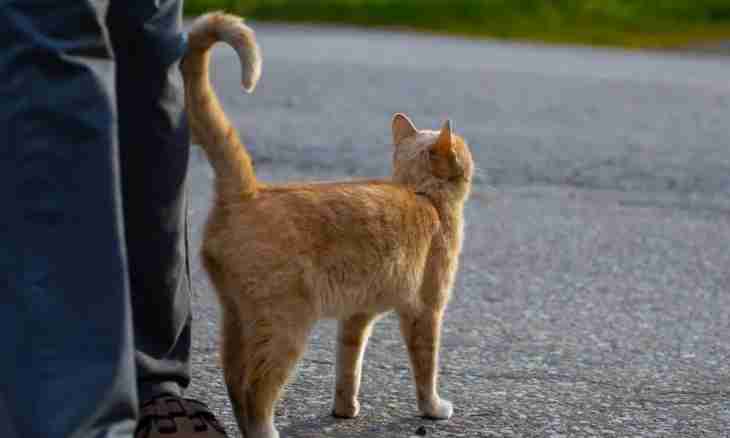It is considered that the person once too had a tail, but modern homo sapiens from it had only one-two rudimentary vertebras around a tailbone and that not at all. However at all representatives of the cat family – including, and for domestic cats – tails are available, and, judging by behavior of these animals, they very much are proud of the tails. For what does the cat need a tail and what functions it is designed to perform?
Instruction
1. Know that one of the main destinations of a tail at a cat is a peculiar natural balance weight which always is at her. In the wild nature any cat – first of all the hunter, and she clambers on trees and fearlessly walks about on their branches, watching for production or, on the contrary, escaping from larger and strong aggressor. At the same time the tail performs for a cat the same function, as a pole for the rope-walker – its fluctuations it helps itself to keep balance, preventing its loss and the subsequent falling. Therefore the animal stable and surely can stand even on the small patch. When the cat runs away from someone on a plain surface or, on the contrary, chases production, the tail helps it with it much. If the animal does sharp turn, then his tail falls in an opposite direction, performing function of a counterbalance. Thus does not bring a cat on turns that allows it to keep high speed throughout all pursuit.
2. You can trust or not believe that existence of a tail allows cats to land on paws when falling from big height. This statement is rather logical, but it is worth to remember that exist and artificially removed cat breeds at which representatives the tail does not exist. Such cats likewise land on paws when falling, as well as their long-tailed fellows. Thus, only the right opinion on this matter simply does not exist today.
3. Pay attention that the cat uses the tail as one of the tools which are most actively used for communication. Remember how the cat minutes of strong irritation sharply pulls a tail here and there as she raspushat it and lifts vertically up if something frightens her. In combination with position of ears and expression of eyes of an animal amplitude of the movement of his tail allows to draw exact conclusions on how the cat will behave in the next seconds. For example, if the tail of a small animal sharply "wags" to the right and to the left, and his ears are pressed to the head, but not completely, then it means that the cat prepares for the attack and just about will rush in fight.

